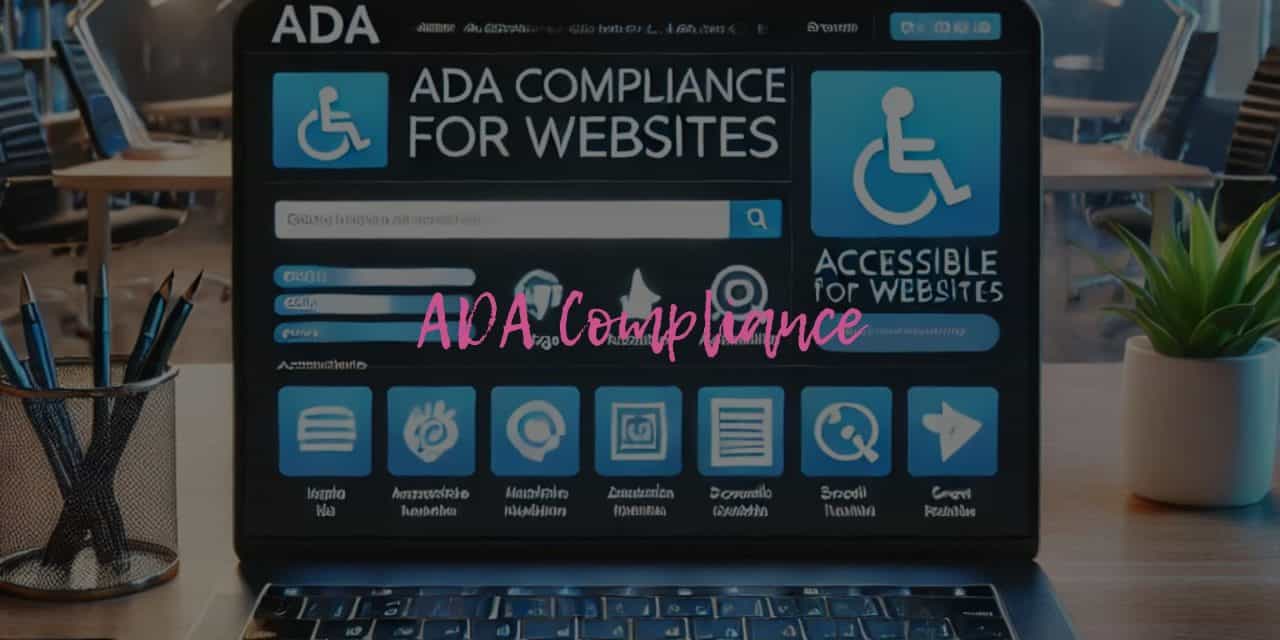Website accessibility is an essential feature all businesses and website owners must implement. Accessibility ensures your website is usable for everyone, including those with disabilities. This goes beyond SEO; it’s about creating an inclusive digital environment.
Making your website accessible can prevent legal issues, expand your audience, and boost user satisfaction. In this guide, we’ll explore the importance of ADA compliance and provide actionable steps to make your website accessible to all.
What is ADA Compliance?
ADA compliance refers to adhering to the rules set by the Americans with Disabilities Act (ADA), which ensures people with disabilities are not discriminated against. Originally passed in 1990, this law covers various aspects of life, including education, transportation, and technology. In the digital age, these rules extend to websites, ensuring everyone has equal access to online content.
To achieve ADA compliance, your website must meet the ADA Standards for Accessible Design, ensuring that people with disabilities can navigate and interact with your site effectively.
ADA, Section 508, and WCAG
- ADA: A federal law applicable to public and private businesses to ensure accessibility.
- Section 508: Mandates accessibility for federal agencies but does not apply to private companies.
- WCAG (Web Content Accessibility Guidelines): Offers guidelines for creating accessible websites. Though not legally binding, adhering to WCAG can help meet ADA requirements.
Why is ADA Compliance Important for Your Business?
1. Expands Your Reach
An ADA-compliant website ensures you don’t exclude potential customers. With nearly 1 in 4 U.S. adults living with a disability, you could miss out on a significant portion of your audience by not prioritizing accessibility.
2. Improves User Experience
Accessibility features like readable fonts, subtitles for videos, and alt text for images benefit all users. These improvements enhance the overall usability and make your site more user-friendly.
3. Boosts SEO
Many ADA compliance practices, like using descriptive alt text and proper headings, align with SEO best practices. An accessible website often ranks higher in search engine results.
4. Reduces Legal Risks
Non-compliance can lead to lawsuits, as seen in high-profile cases involving Nike and Domino’s. Adhering to ADA standards protects your business from legal challenges.
How to Make Your Website ADA-Compliant
1. Improve Website Navigation
- Enable Keyboard Navigation: Ensure users can navigate your site using only a keyboard. This includes using the tab and shift keys to move through elements.
- Add Skip Links: Provide buttons like “Skip to Content” to help users bypass repetitive navigation menus.
- Highlight Active Elements: Use visual indicators, such as CSS highlights, to show where users are on the page.
2. Optimize Forms and Tables
- Label all form fields with the
<label>tag to make them screen reader-friendly. - Provide clear instructions above forms, such as password requirements.
- Ensure forms can be navigated using a keyboard.
3. Design with Accessibility in Mind
- Readable Fonts: Use sans-serif fonts, avoid sizes below 12px, and opt for bold text over italics for emphasis.
- Color Contrast: Use tools like WebAIM’s Contrast Checker to validate your color scheme.
- Alt Text for Images: Provide descriptions for all images except decorative ones.
- Limit Flashing Graphics: Avoid animations that flash more than three times per second to prevent seizures.
4. Enhance Video Accessibility
- Add subtitles to all videos.
- Provide transcripts that match the video content.
- Include audio descriptions for visual content.
5. Structure Content Logically
- Use a clear heading hierarchy (H1, H2, H3) to organize your content.
- Write short, simple sentences that are easy to understand.
- Include descriptive links instead of generic “Click Here” text.
Tools to Help with ADA Compliance
- Wave by WebAIM: Checks website accessibility.
- Color Contrast Analyzer: Validates color contrast ratios.
- Axe: A browser extension for accessibility testing.
- Lighthouse: A tool within Google Chrome for auditing accessibility.
Conclusion
Making your website ADA-compliant is essential for inclusivity, legal protection, and business growth. By implementing the steps outlined in this guide, you can create a website that serves all users effectively.
Ready to improve your website’s accessibility? Start today and ensure your site meets ADA standards for a better user experience.





